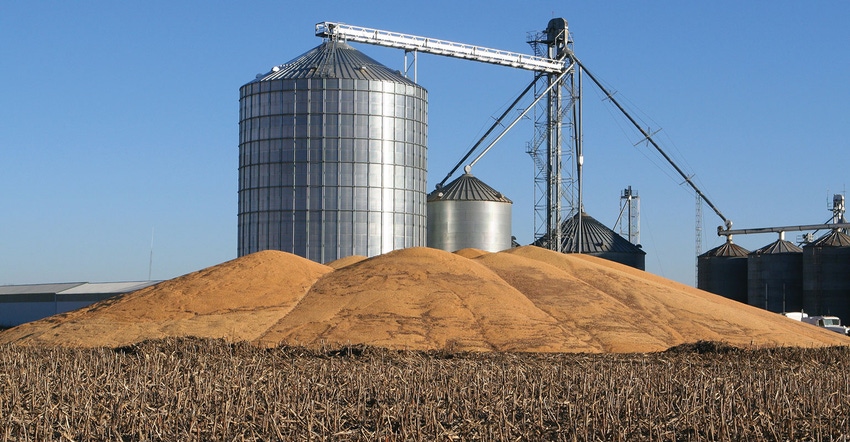
To sell or not to sell — in grain marketing that is always the question.
Farmers who are still waiting to sell, with old-crop grain still in storage, may be running out of luck. Prices have been on an upward trajectory this past week, thanks to some lower-than-expected acreage data from USDA, with further support from hot, dry weather forecasts across the Midwest. But the clock is still ticking.
And even if you have sold grain and are cleaning out bins, market forces may bring some big challenges at harvest. A bountiful crop is sometimes a double-edged sword, especially if prices are low and you don’t have enough structured space.
Gary Woodruff, district manager with GSI, says a lot of elevators are already booked this fall, and there is a finite number of on-farm bins that can be added from now until fall (although he does expect grain bins to be built into October this year, much later than typical).
In short, Woodruff has doubts that on-farm storage capabilities will bear the load of what could be a historically large crop. “If you do the math — big carryover, less consumption and a good crop coming — the odds are we’re going to run out of storage space,” he says.
Matthew Kruse, president of Commstock Investments, says one approach is selling a set amount of old-crop grain, say 10%, each week to slowly gain back storage capacity.
“This plan is not for everybody,” he says. “But it forces you to make a decision. It also leaves the door open for another rally, while at the same time taking some market risk off the table.”
Temporary solutions?
That leaves temporary storage, namely grain piles and polyethylene bags. The latter of which is 200 to 250 feet long and can store between 7,500 and 9,500 bushels of corn.
The bags are economical, says Chad Hart, Extension specialist with Iowa State University, although there’s plenty of sweat equity involved to manage them well and maintain quality. “There’s no set-it-and-forget-it strategy there,” he says. “Quality can shift in a hurry.”
Because of that, Woodruff recommends the following:
Plan now if you think you’ll need temporary storage.
Aerate that grain to get it below 50 degrees F.
Dry the grain to 14% moisture.
Harvest the grain last and sell it first.
Sitting on corn
If you’re still waiting for that rally to sell old-crop corn, ask some tough questions. “How comfortable are you with the quality of the crop that’s in storage?” Hart poses. “If you’re worried about quality, it’s better to move sooner than later.”
Woodruff agrees that time is running out to move old-crop grain. How fast the clock is ticking depends a lot on two variables: moisture and temperature. Farmers hoping to store grain from one harvest to the following fall need moisture no higher than 14%. Store any longer than that and moisture should be closer to 13%. Grain temperatures at 50 degrees or below are optimal, although maintaining that is often a challenge through the hot summer.
Grain can go bad very quickly, Woodruff says, and he’s taken more calls than usual from farmers asking about how to deal with adverse quality this spring.
“It’s really a matter of self-preservation to sell,” he says.
Woodruff means that literally — bin entrapments are up this year, and he says the vast majority of these accidents occur when dealing with out-of-condition grain.
“You never get trapped in a bin of good grain because you never have to get into that bin,” he says.
One thing is certain: The window to make proactive decisions is quickly closing.
About the Author(s)
You May Also Like






